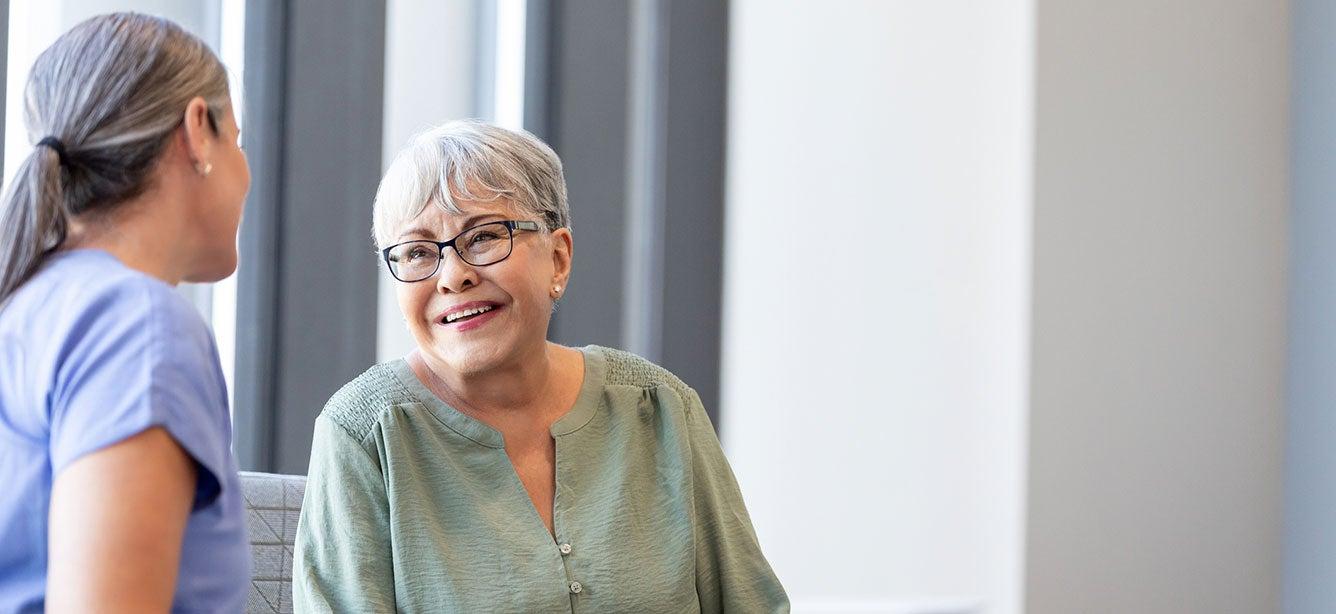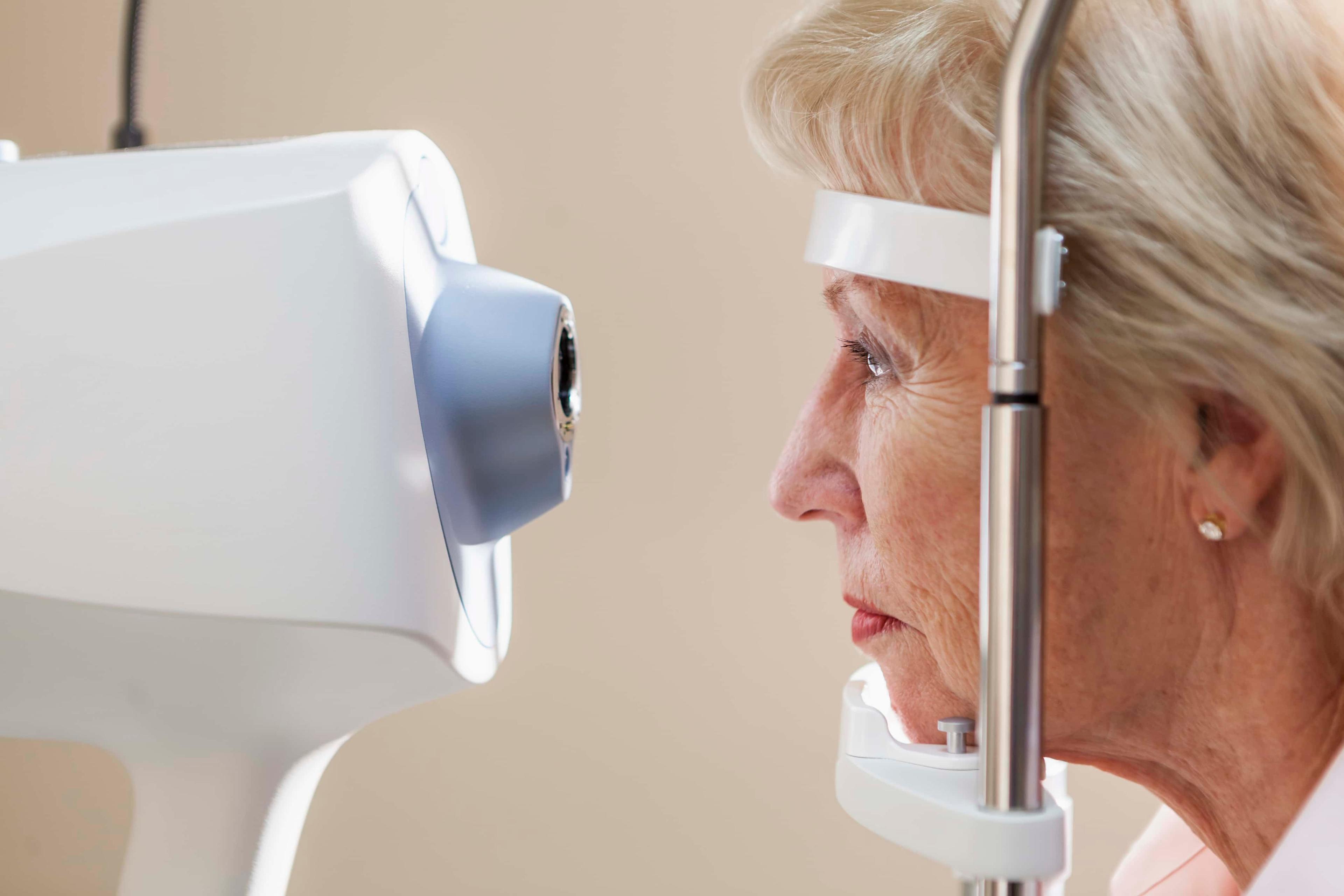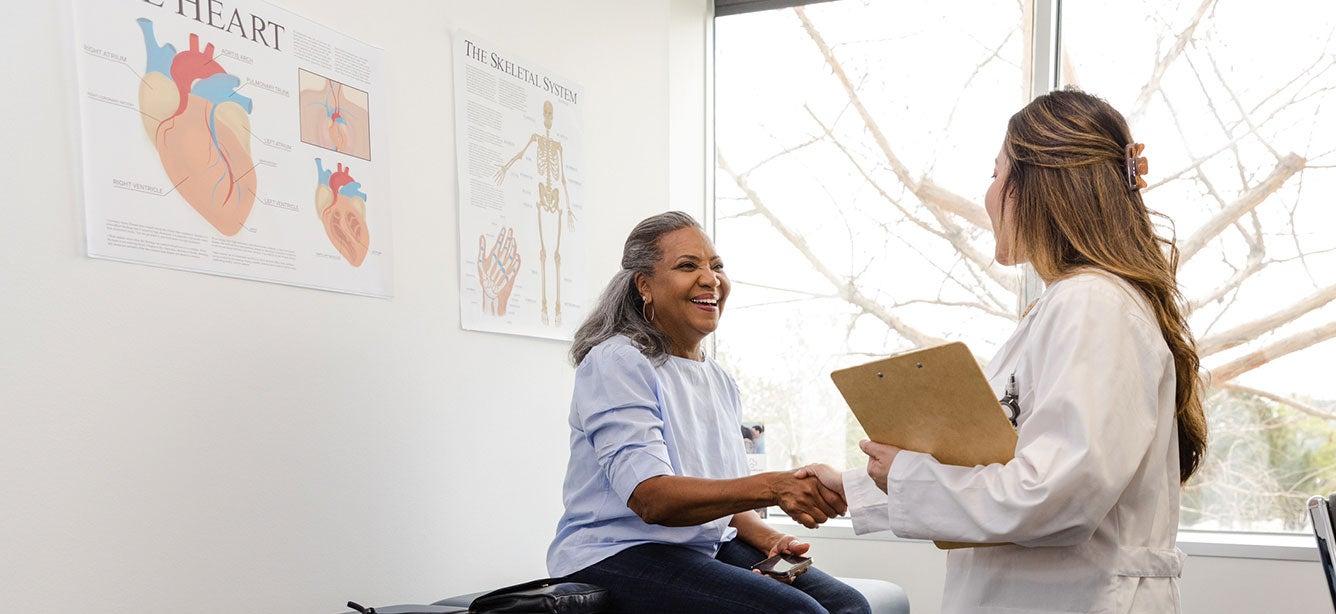How Vision Rehabilitation Changes Lives
5 min read

When 86-year-old Arnold, who already had severe vision loss in his right eye, experienced a hemorrhage in his left eye, he was unsure whether he’d ever see again. The long-time owner of a financial business and a once avid bridge player, he required a full-time health aide to remain safely at home.
“I was at a point where I could not function,” explained Arnold. “When I came to Lighthouse Guild, I could see almost nothing. But now I have a quality of life again. I can’t believe it.”
Vision rehabilitation services are helping Arnold regain function and maximize his usable vision. He is developing skills and strategies to remain independent and active. Independent living skills help adults like Arnold accomplish all the activities associated with daily living, including home organization and modifications, meal preparation and food safety, personal care, prescription medication management, cleaning, planning and time management, finances and money management, and more.
Vision rehabilitation provides support and hope
Almost 20 million people in the US live with blindness, low vision, or significant visual impairment.1 The risk of vision loss increases as we age, often due to medical conditions and eye diseases such as diabetic retinopathy, macular degeneration, glaucoma, cataracts, and more.
Vision correction can occur with glasses, contacts, medication, and surgery. These interventions can also reduce or delay sight loss. However, there are instances when these therapies are exhausted, and the doctor says, “there is nothing more that can be done medically,” This can be a devastating thing to hear, yet it is the moment when vision rehabilitation provides tremendous support and hope.
Life-changing orientation and mobility training
Jim lived a full and rich life, but it took an unexpected turn when he was diagnosed with glaucoma and experienced a fully detached retina with multiple breaks. The diagnosis was shocking and thrust Jim into a new, uncertain phase of life. Simple activities that once came effortlessly, such as watching TV, walking through a hallway, or navigating a grocery store, suddenly became significant challenges.
Through St. Louis Society for the Blind and Visually Impaired, an agency providing vision rehabilitation programs, Jim was introduced to various techniques and tools, including a portable electronic magnifier and smartphone with accessibility features—all crucial in helping him connect and navigate.
Orientation and mobility training was one of the programs that helped Jim travel more safely at home and throughout the community. Depending on the level of vision loss, training may include the use of a white cane and smart devices with GPS apps. Support groups also provided Jim with a community of people adapting to vision loss. Their shared experiences and strategies helped Jim find the strength and motivation to adjust, remain resilient, and regain his independence.
Accessing the world through specialized technology, devices, and aids
Specialized equipment and software can help to perform various tasks and remain connected. These include computers, tablets, and smartphones with accessible software, apps for magnification, screen reading, and voice recognition.
Standalone adaptive devices and specialized low-vision aids include talking devices, such as a watch or scale, and specialized nonprescription glasses, including sun ware and prism lenses. These low vision aids can also help you or someone you support live more independently every day. Many vision rehabilitation agencies offer employment services to help adults with vision loss remain in an existing position or transition to a new one.
Higher rates of anxiety and depression among those with vision loss
Adults living with blindness and low vision can experience significantly higher rates of anxiety and depression. Vision rehabilitation helps adults continue socializing with family and friends and participate in the activities they enjoy most. Support groups and other support services are also available to maintain vital social connections and reduce the risk of isolation to positively impact mental health.
Tragically, less than 5% of people who could benefit from vision rehabilitation Services receive them. Please help us change that!
Vision Rehabilitation Week is June 10-16!
Join us to celebrate and commemorate Vision Rehabilitation Week from June 10-16. It’s the perfect opportunity to spread the word about vision rehabilitation programs to anyone you know, work with, or support who lives with blindness and low vision. Learn more about vision rehabilitation Week and download information and images to help you share information about vision rehabilitation with family and friends on social media.
Accessing vision rehabilitation programs and services
Your local vision rehabilitation agency can accomplish an assessment to confirm the optimum combination of programs and training. Download a list of vision rehabilitation agencies. Visit Time to Be Bold to locate local vision rehabilitation services and other vital resources. Call the APH hotline to receive support and practical coping strategies for everyday tasks, join remote discussion groups, and access free online resources at the APH Connect Center and VisionAware. And Johnson & Johnson offers important information on inherited retinal diseases, related genetic testing, and much more.
Learn more about vision rehabilitation through other articles in this series:
- The Reality of Aging and Vision Loss in America
- Identifying Undiagnosed Vision Loss in Older Adults
- Common Age-Related Eye Diseases: What to Know and What You Can Do
- Vision Rehabilitation Can Complete the Continuum of Care
- How to Connect Older Adults to Life-Changing Vision Rehabilitation Services
- How Referring Older Adults to Vision Rehabilitation Can Strengthen Their Medical Care
- Helping People with Blindness and Vision Loss Continue to Participate in Everyday Activities
- How to Meet the Growing Challenge of Older Americans with Vision Loss
Sources
1. Georgetown University Health Policy Institute. Visual Impairments. Found on the internet at hpi.georgetown.edu/visual/



